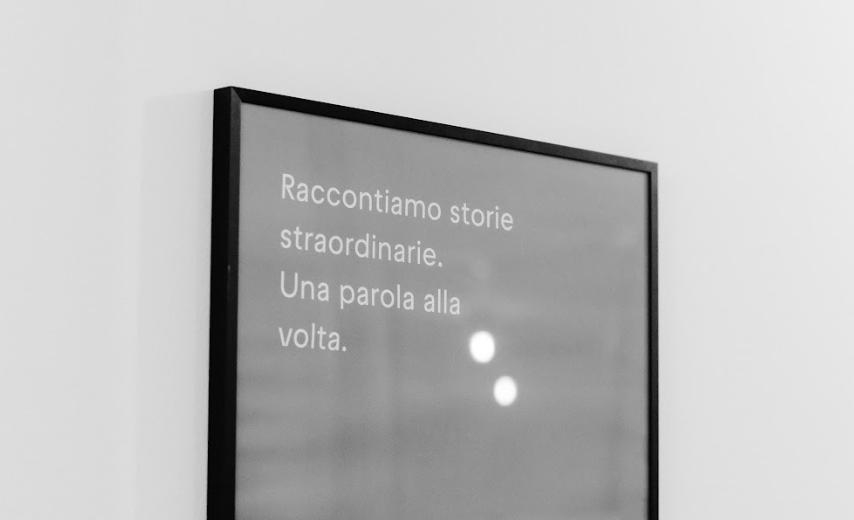Quali sono gli ingredienti più potenti all’interno della storia di un’impresa? Qual è l’elemento capace di far dire “wow” ai giornalisti? E cosa non può mancare all’interno di un comunicato stampa per attirare l’attenzione dei media?
Quattro giornalisti/e raccontano il loro punto di vista riguardo gli elementi che rendono una storia “degna” di essere raccontata a livello mediatico.
Silvia Pagliuca (giornalista professionista – collabora con Il Sole24Ore e Corriere della Sera)
- Quali sono gli aspetti che più ti colpiscono in una storia?
Autenticità e dietro le quinte: non amo raccontare la meta, la parte più emozionante è il viaggio. Chi eri “prima”? Cosa ti ha reso ciò che sei oggi? Essere autentici vuol dire aver voglia di svelare anche le difficoltà, i momenti bui, gli stop inattesi.
Quando si raccontano storie di successo, si rischia di creare distanza, anziché empatia, con chi legge. Per questo, ritengo fondamentale partire da elementi “umani”. Per ricordarsi, e ricordare a tutti, che dietro ogni percorso apparentemente perfetto, si celano cadute e ripartenze.
- Cosa ti spinge a raccontarla?
Racconto storie che vorrei leggere. Per informarmi, ma soprattutto per essere ispirata. Per capire quali sono i driver che guidano scelte dirompenti, per intercettare nuovi trend, per analizzare fenomeni o eventi dall’interno, dando voce a chi ne è protagonista.
- Quali sono gli elementi fondamentali che non possono mancare in un comunicato stampa?
Dati di contesto attendibili e corredati da fonti. I dati sono essenziali per far capire il valore di una storia. A seguire: la descrizione puntuale della storia presentata e l’impatto generato. È fondamentale che emerga il “why”: perché quella notizia dovrebbe interessare me e, di conseguenza, i miei lettori? Quali elementi la rendono unica? Ancora: un commento del/la protagonista, per ascoltare, fin da subito, la sua voce. Infine, preziosissime: le foto.
Simone Cosimi (giornalista professionista – scrive per La Repubblica, Wired, Vanity Fair, Oggi e diverse altre testate)
- Quali sono gli aspetti che più ti colpiscono in una storia?
Sono sicuramente gli “estremi”, che siano della sua eccezionalità oppure della sua incredibile normalità. In generale però devono esserci degli elementi di notiziabilità, che siano anche legati alle nuove dinamiche dei social e della società, che siano forti, ma non necessariamente inediti.
- Cosa ti spinge a raccontarla?
Per me non è tanto arrivare prima, quanto arrivare bene. A volte quello che mi porta a scrivere è la voglia di smentire o di precisare e raccontare in modo più attento, notizie che sono uscite prima e che quindi possono diventare una fonte secondaria di approfondimento.
- Quali sono gli elementi fondamentali che non possono mancare in un CS?
Forse dirò una banalità, ma sicuramente la notizia: spesso i comunicati stampa contengono notizie soft o forzate e che quindi non hanno solide radici. Dovrebbe quindi esserci sempre qualcosa di forte e non inventato, anche a costo di rinunciare a qualche lancio.
Un altro ingrediente sono i numeri, quindi la capacità di ampliare la notizia con statistiche documentate e certificate con le fonti indicate e la descrizione del contesto in cui si inserisce la realtà che si sta raccontando.
Enzo Argante (giornalista professionista – collabora con Forbes, Il Sole24Ore, Formiche)
- Quali sono gli aspetti che più ti colpiscono in una storia?
Troppo facile dire che bisogna cercare la notizia. In realtà anche questa è un’affermazione standard. Forse occorre invece individuare il bandolo della matassa della storia: un aspetto, significativo e significante, che rende unica quella informazione. Il resto (dati, dichiarazioni etc.) saranno una semplice conseguenza dell’attenzione conquistata.
Quale e come individuare la chiave è proprio la sfida dell’agenzia.
Servono storie brevi e semplici che consentano ai lettori di entrare subito in sintonia con il messaggio semplificato e di impatto.
- Quali sono gli elementi fondamentali che non possono mancare in un comunicato stampa?
Nell’era dell’overdose informativa il comunicato stampa ha l’ingrato compito di agganciare l’attenzione e perforare la corazza mediatica tradizionale. Solo successivamente fornire le informazioni. È questo il passaggio più delicato in cui il CS si uniforma al più sfacciato espediente per l’apertura di un articolo.
Ancora adesso, nel momento in cui domina l’informazione sincopata social, invece le agenzie tendono a fornire il maggior numero possibile di informazioni che spesso rendono macchinosa la relazione.
Il comunicato deve inserirsi per fluidità nel fiume di informazioni che sollecitano l’attenzione del giornalista e nello stesso tempo distinguersi dalle altre per avere la possibilità di pubblicazione.
Simone Pazzano (giornalista – collabora con Osserva Beverage (A&F – Osserva Italia di Repubblica) e con Informacibo)
- Quali sono gli aspetti che più mi colpiscono in una storia?
L’aspetto umano. Perché anche dietro a un grande trend di mercato o alla crescita strepitosa di una startup c’è sempre un’idea, un’intuizione riconducibile a una persona o a un gruppo di persone. E quindi una bella storia da raccontare. Le esperienze personali (tra cui sfide, gioie e difficoltà) e le dinamiche umane sono ciò da cui può trarre grande ispirazione sia chi scrive che chi legge.
- Cosa ti spinge a raccontarla?
Il pensiero di essere utile al lettore. La domanda da cui parto è sempre “in che modo sto aiutando chi mi legge?”
Un buon giornalista non può mai dimenticare che tutto ciò che scrive deve essere al servizio dei lettori. Cerco ogni volta di fare in modo che al termine dell’articolo al lettore rimanga qualcosa di davvero utile. Può essere un’informazione pratica come un’emozione, un esempio da seguire o un nuovo ristorante da provare.
- Quali sono gli elementi fondamentali che non possono mancare in un comunicato stampa?
Dati e fonti sono essenziali. Puoi avere una storia bellissima e interessante, ma se fornisci informazioni approssimative è come non averla. Un giornalista ha bisogno di numeri, studi di settore, risorse a supporto del contenuto e, ovviamente, delle fonti da cui sono tratti.
Il peggior comunicato è quello che magnifica solo il cliente dell’ufficio stampa e usa aggettivi mirabolanti, il migliore è quello che alla storia accompagna anche un quadro di settore fornendo un punto di vista più ampio e dettagliato.
Aggiungo che in un’era in cui si trovano contenuti ovunque e senza controllo, e parte del lavoro viene fatta fare anche all’AI, la precisione nella segnalazione di dati e fonti è di vitale importanza.







